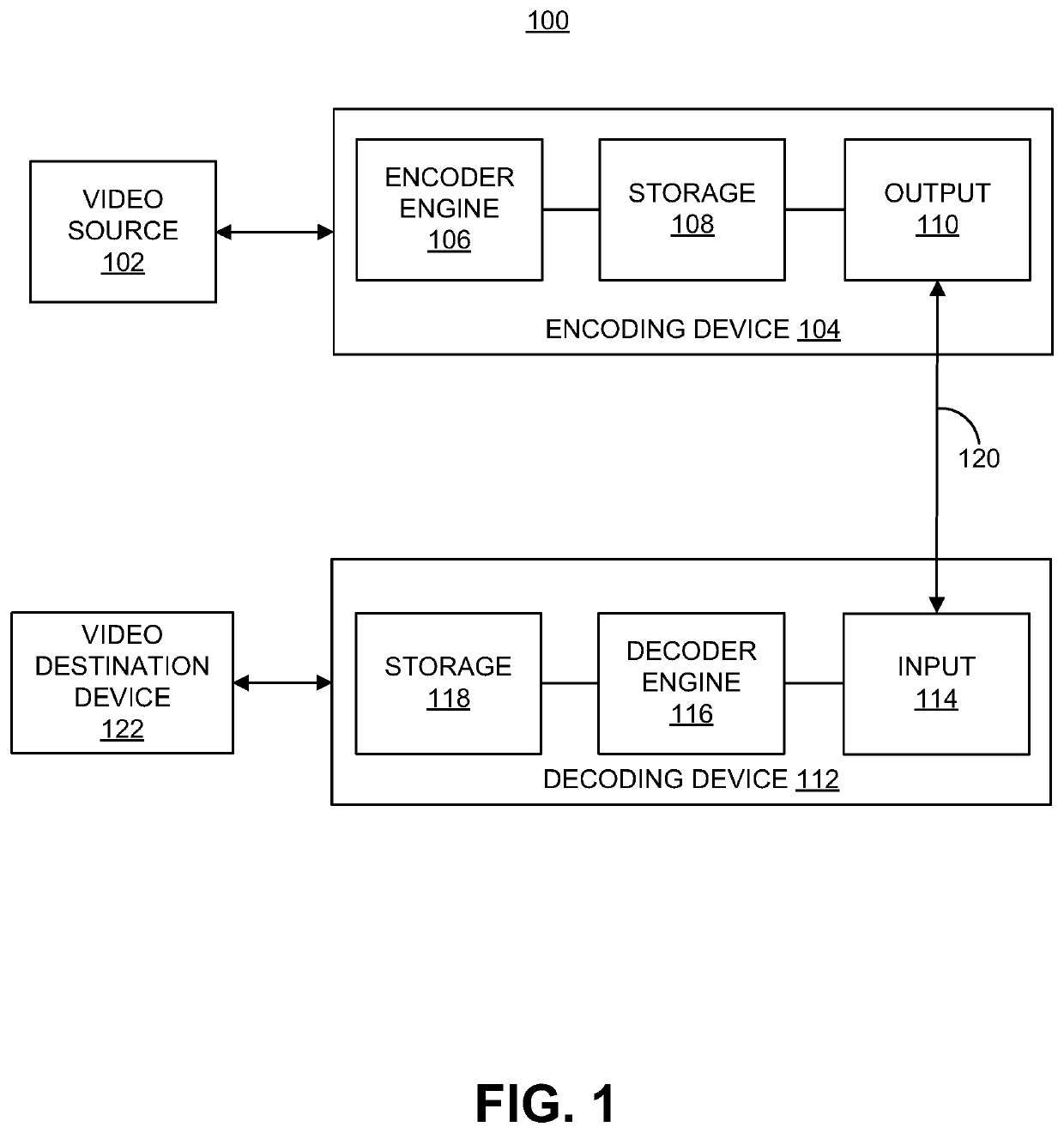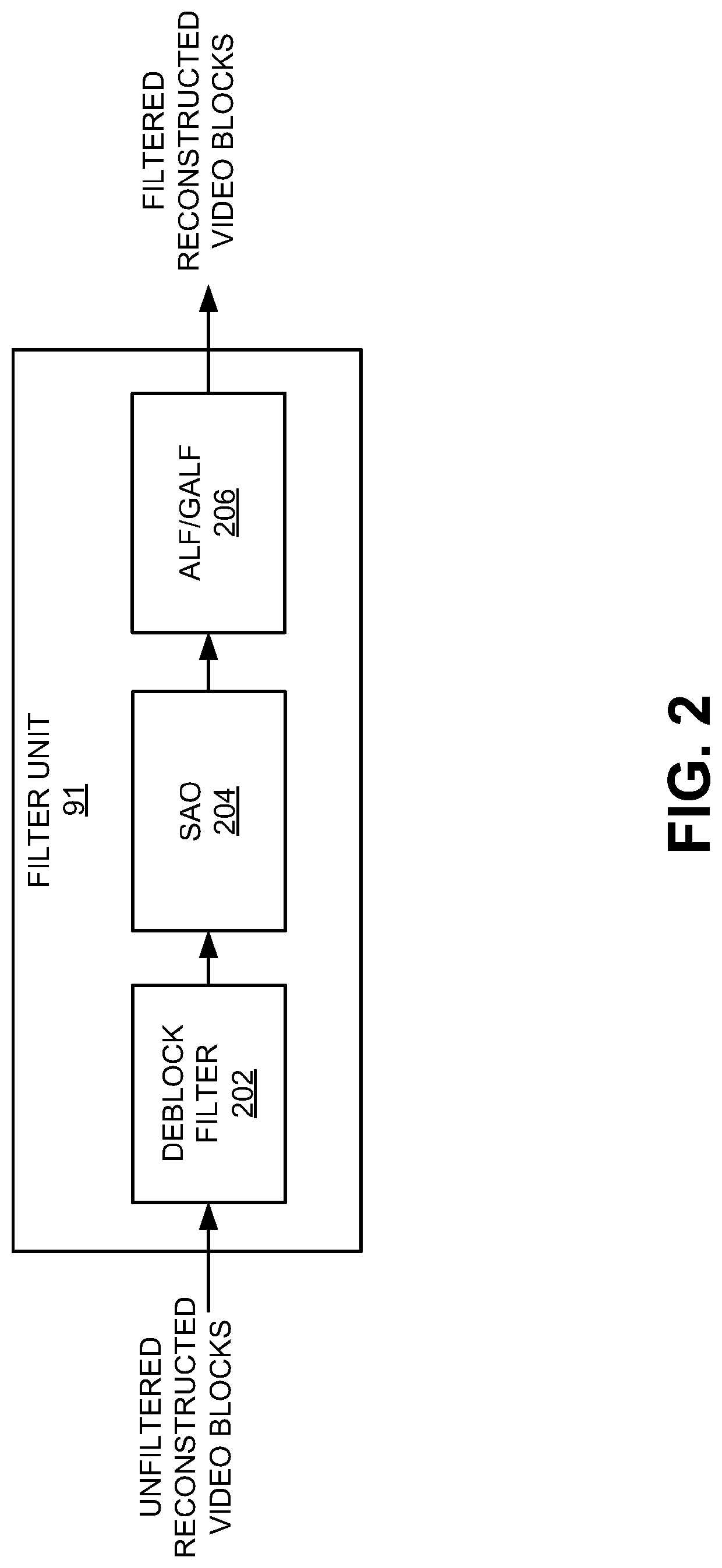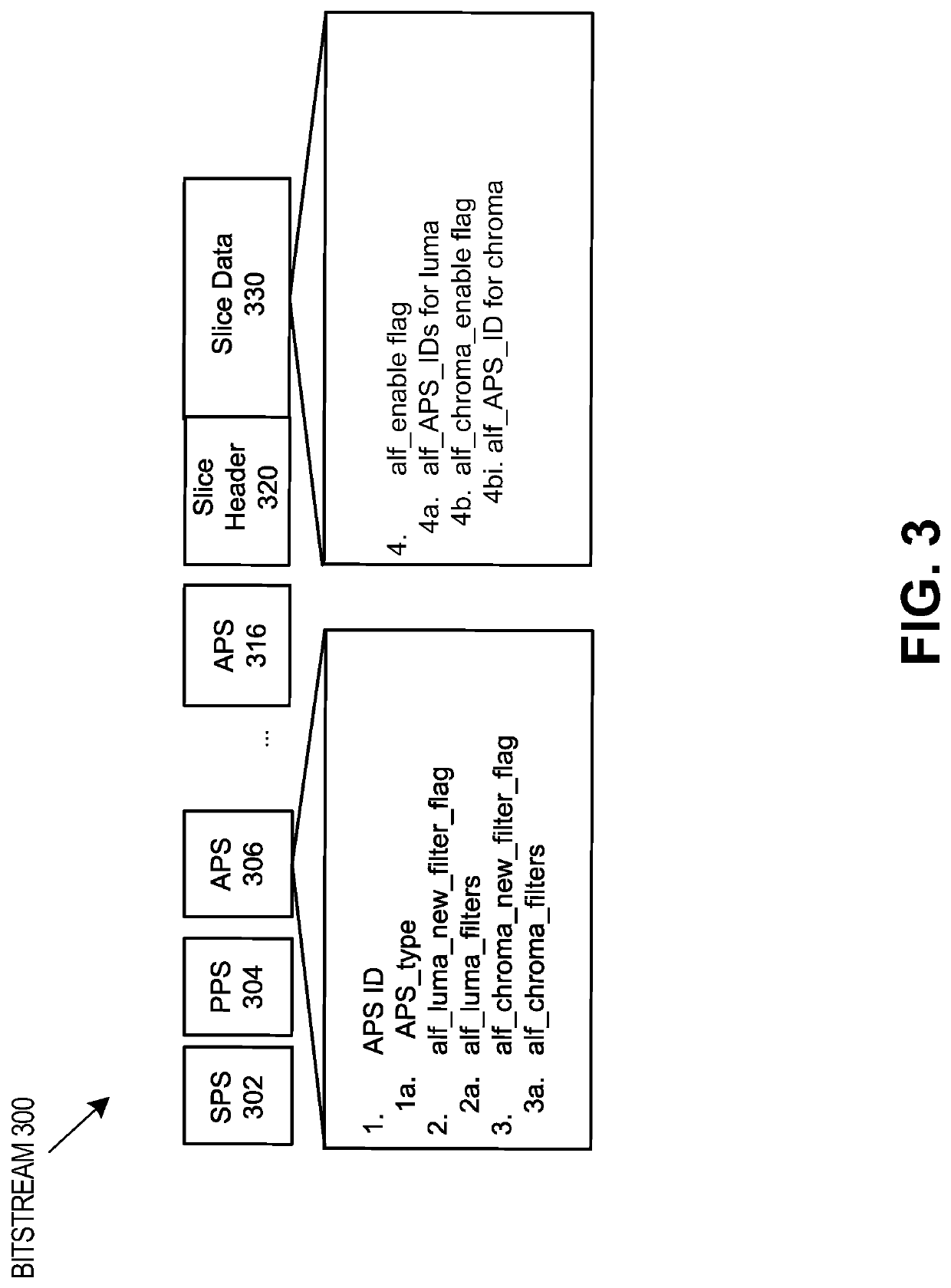Adaptation parameter sets (APS) for adaptive loop filter (ALF) parameters
a technology of adaptive loop filter and adapter parameter, applied in the field of video coding, can solve the problems of burden on communication network and device, impose resource cost, etc., and achieve the effects of improving signaling efficiency, processing efficiency, and memory usage efficiency
- Summary
- Abstract
- Description
- Claims
- Application Information
AI Technical Summary
Benefits of technology
Problems solved by technology
Method used
Image
Examples
example 1
[0210]A method of processing video data, the method comprising: obtaining an encoded video bitstream including an adaptation parameter set associated with at least one picture of the encoded video bitstream, the adaptation parameter set including adaptive loop filter data for the at least one picture; and decoding at least one of a first syntax element and a second syntax element from the adaptation parameter set, the first syntax element including adaptive loop filter data for a luma component of the at least one picture, and the second syntax element including adaptive loop filter data for chroma components of the at least one picture.
example 2
[0211]The method of example 1, wherein the encoded video bitstream includes a first flag and a second flag, the first flag indicating whether luma adaptive loop filters are signaled in the adaptation parameter set, and the second flag indicating whether chroma adaptive loop filters are signaled in the adaptation parameter set.
example 3
[0212]The method of example 2, wherein signaling of the first flag is independent of signaling of the second flag.
PUM
 Login to View More
Login to View More Abstract
Description
Claims
Application Information
 Login to View More
Login to View More - R&D
- Intellectual Property
- Life Sciences
- Materials
- Tech Scout
- Unparalleled Data Quality
- Higher Quality Content
- 60% Fewer Hallucinations
Browse by: Latest US Patents, China's latest patents, Technical Efficacy Thesaurus, Application Domain, Technology Topic, Popular Technical Reports.
© 2025 PatSnap. All rights reserved.Legal|Privacy policy|Modern Slavery Act Transparency Statement|Sitemap|About US| Contact US: help@patsnap.com



